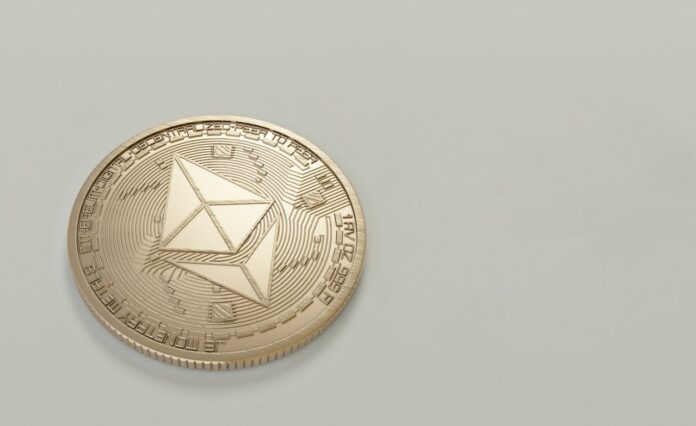The Ethereum concept is similar to other blockchain projects. It was created to provide greater access to financial services and build an economy based on value rather than surveillance, ensuring that participants’ personal information is secure.
Transactions can be completed peer-to-peer and without the use of an intermediary. Because there is no centralized authority, no company or individual controls the Ethereum network. Ethereum’s ultimate goal is to become a global platform for decentralized applications, allowing users worldwide to build and run software resistant to censorship, fraud, and downtime.
Unlike Bitcoin, which is primarily used for transactions, Ethereum is responsible for powering the entire ecosystem of decentralized applications. This technology also powers digital money and global payment systems. It was also the first platform to introduce NFTs (non-fungible tokens that allow for recording ownership on the blockchain).
Ethereum was founded on — and still operates on — the Proof-of-Work consensus algorithm. However, due to criticism of the energy consumption mechanism and the scalability issues it causes, the platform’s developers decided to switch to Proof-of-Stake. The procedure can be completed all at once or gradually. The transition is broken down into stages and updates. The final stage of the Merge was scheduled for the beginning of July but has only been successfully launched on the test net thus far.
Technical Analysis of Ethereum:
After the market crash caused by the drop in the price of Bitcoin earlier this year, Ethereum fell for a while. However, since the trend reversal in late July, Ether’s price has been moving in an upward channel.
On the 7-8 August weekend, Ethereum appeared to be rejected at the $3200 resistance level, but it has yet to be determined whether this signals a longer-term reversal or just a temporary setback. If the price continues to fall, there may be new support at $2600, at which point the price correction may be expected to reverse and return to the new highs.
Ethereum Price Forecast for 2022:
There are mixed feelings about eth forecast for the rest of 2022. TradingBeast predicts a drop to $1307.48 by the end of the year, while PricePrediction.net predicts $581.8956. Other experts, such as WalletInvestor, are more optimistic about Ethereum’s future price, citing a high of $1679.5623 in December.
Ethereum Price Forecast for 2030:
Regarding long-term Ethereum price predictions for 2030, experts have two opposing viewpoints. According to WalletInvestor, the price of Ethereum will rise further and eventually reach $1996.9599 by the end of the decade. The price prediction for Ethereum by TradingBeast is for an uptrend to $3137.06568. Despite this, PricePrediction.net’s forecast remains pessimistic, predicting a drop to $251.2731.
The above analysis shows that Ethereum (ETH) projections are somewhat contradictory. There is no universal agreement on whether future ETH price movements will be positive or negative. Indeed, future potential growth depends on various factors, including announcements, new technological solutions developed by Ethereum projects, the crypto environment in general, legal status, and so on. We want to remind you that before investing in any cryptocurrency, you should conduct your research.
ada price prediction 2025 and 2030:
Most experts believe Cardano is the only true contender for the altcoin crown. Cardano has long been referred to as a potential “Ethereum killer” due to its technical credentials and innovative, two-tier network architecture. As improvements are made to its ecosystem, this somewhat sinister moniker may become a reality in the coming years.
Of course, there is still a long way to go. Still, understanding Cardano’s technical fundamentals and a review of its recent price movement should illuminate why many investors are suddenly turning bullish on ADA.
The most recent forecast suggests that the ada price prediction 2025 could reach a high of $4.35 in 2025 and a high of $58.45 in 2030.
Cardano Price Influencing Factors:
Cardano’s price can be influenced by a variety of factors. These elements are primarily concerned with market trends, project updates, and sentiment.
Cardano has a fixed supply and, unlike fiat currencies, is not subject to inflation or depreciation. The price of ADA is also influenced by some Cardano updates. These updates added some useful features while also lowering the price.
Users can also receive ADA that is not yet in circulation as staking returns. This reduces the market supply of ADA while increasing the price. This is because the vast majority of investors who purchase coins for staking returns intend to transfer them from trading platforms to staking accounts. Another factor that could drive up the price of ADA is the ability to facilitate transactions and participate in platform management.
Cardano, like any other cryptocurrency, experienced price fluctuations. The coin experienced two major bursts at the end of 2017 and the start of 2018. The second burst occurred between 2020 and 2021. The COVID-19 pandemic was largely to blame for the subsequent price crash in 2021.
Cardano’s price is being influenced by a number of factors. In addition, Cardano is working on some projects that could help increase the value of a coin.



